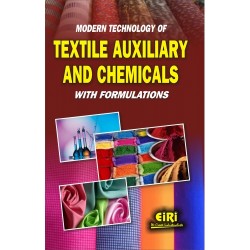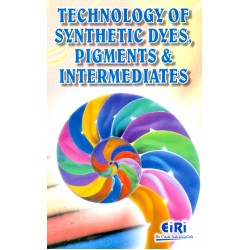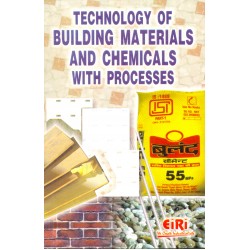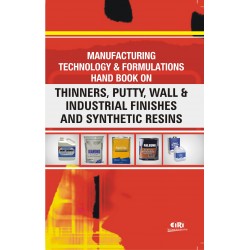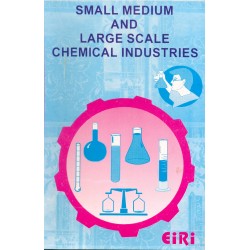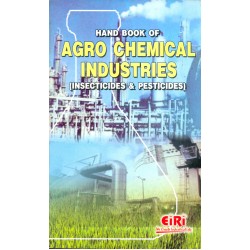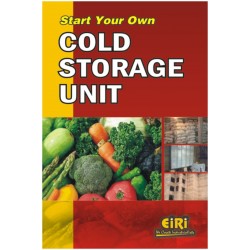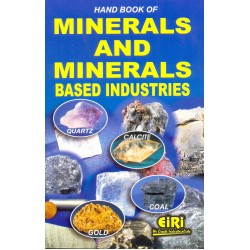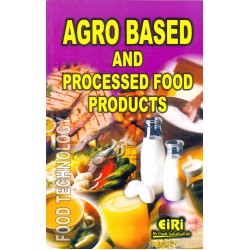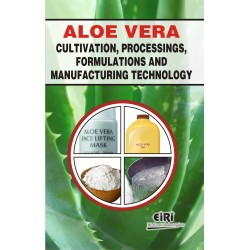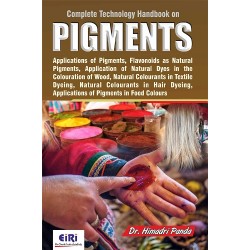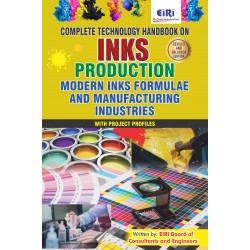modern technology of organic and inorganic chemicals (hand book)
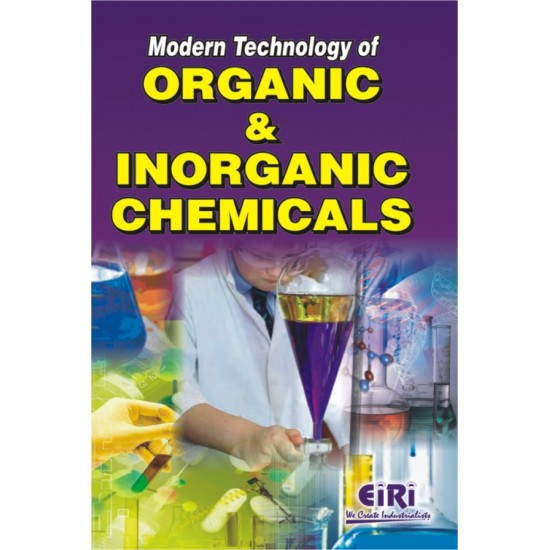
- More than 40 years of experience
- Managed by expert industrial consultants
- ISO 9001-2015 Certified
- Registered under MSME, UAM No: DL01E0012000
- 24/5 Research Support
Get your quesries resolved from an industry expert. Ask your queries before report or book purchase. - Custom Research Service
Speak to the our consultant to design an exclusive study to serve your research needs. - Quality Assurance
All reports are prepared by highly qualified consultants & verified by a panel of experts. - Information Security
Your personal & confidential information is safe & secure.
MODERN TECHNOLOGY OF ORGANIC & INORGANIC CHEMICALS
Ammonia
- Introduction
- Synthetic Ammonia Manufacture
- General Information
- Synthesis Gas Production
- Raw Materials
- Manufacture of Mixtures of Hydrogen, Nitrogen and Carbon Mnoxide
- Steam Reforming (from Natural Gas and Naphtha)
- Partial Oxidation of Heavy Fuel Oil
- Goal Gasification
- Conversion of Carbon Monoxide
- Removal of Carbon Dioxide and Hydrogen Sulfide
- Final Purification of Synthesis Gasses
- Ammonia Synthesis Catalysts
- Reaction of Synthesis Gas of Ammonia
- General Information
- Reactor Types
- Ammonia Separation
- Integrated Ammonia Synthesis Plants
- Ammonia Applications
Aluminium
- Occurrence
- Extraction
- Bayer Process
- Haglund Process
- Extraction of the Metal from Al2O3
- Large scale production of cryolite
- Carbon electrodes
- Temperature of the bath
- Maintenance of temperature
- Electrolysis
- Voltage efficiency
- Current efficiency
- Amperage
- Purification of Aluminium
- Properties of Aluminium
- Action of air
- Uses
- Alloys of Aluminium
- Casting alloys
- Uses of Casting Alloys
- Wrought Aluminium Alloys
- Uses of Wrought alloys
- Protection of Aluminium and Alloy Surfaces
- Calourising
Chlorine and Sodium Hydroxide
- Introduction
- Staring Materials
- Sodium chloride
- Manufacturing Processes
- Mercury Process
- Description of the mercury cells
- Diaphragm Process
- Membrane Process
- The operation of membrane cells
- Evaluation of the Mercury, Diaphragm and Membrane Processes
- Mercury process: Advantages
- Diaphragm process Advantages
- Disadvantages
Cosmetics and Perfumes
- Cosmetics
- Creams
- A representative formula for a cold Cream
- Formula for Vanishing cream
- An outline flow diagram for preparation of creams
- Hair Sprays
- Hair dyes
- Tooth powder and tooth paste
- Representative formulation of a tooth paste
- Tooth powder
- Talcum powder
- Face powder
- Lip stick
- Nail polish
- Shampoos
- Suntan lotion
- A typical formulation for Suntan lotion
- Constituents
- Odourous substances are
- Synthesis of some perfumes and flavours
- Coumarin by Perkin reaction
- Cinnamaldehyde
- b-phenylethyl alcohal
- Anisaldehyde
- Benzaldehyde
- Citronellol
- Musk xylene and Musk ketone
Dyes
- Dyes
- Colour and Constitution
- classification of Dyes
- Chemical Classification
- Application based classification of dyes
- Method of mordanting
- Interrelationship of dye industry and coal
- Azo Dyes
- Basic azo dyes
- Aniline yellow
- Butter yellow
- Methyl Orange
- Diphenylmethane dyes
- Triphenylmethane Dyes
- Matachite Green
- Pararosaniline
- Xanthene dyes
- Eosin and Mercurochrome
- Crystal violet
- Phenolphthalein
- Nitro Dyes
- Synthesis
- Anthraquinone Type of Vat Dyes
- Anthraquinold dyes
- Phthalocyanine dyes and pigments
Enamels
- General Information
- Classification of Enamels
- Layer Arrangement
- Colouring and Opacifying Systems
- Manufacture of Enamel First
- Raw Materials
- Smelting of Frits
- Conversion of the frits into coatable forms
- Enamel Application on sheet steel
- Wet Application Processes
- Dry Application Processes
- Firing of Enamels
- Applications for Enamel
Explosives
- Introduction
- Assessment of Explosives
- Sensitiveness tests
- Determination of explosive power
- Stability tests
- Initiatory explosives
- Mercury fulminate
- Lead azide
- Lead styphnate (lead 2,4,6 trinitroresorcinate)
- Other nitrophenol salts
- Diazodinitrophenol (DDNP)
- Tetrazene
- Other compounds
- Silver azide
- Silver fulminate
- Azoletrazole
- Secondary explosive
- Nitroglycerine (glyceryl trinitrate, NG)
- Nitrocellulose (cellulose nitrate, NG)
- Pentaerythritol tetranitraate (PETN) (C(CH2ONO2)4]
- Ethyleneglycol dinitrate (EGDN) [(CH2ONO2)]
- Diethyleneglycol dinitrale (DEGDN) [O(CH2CH2ONO2)]
- Mannitol hexanitrate (nitromannite) [O2NOCH2-)CHNO2)4-CH2ONO2]
- Nitrostarch
- Trintrotoluene Trinitrotoluene or 2,4,6-TNT)
- Tetryl (2,4,6-trinitrophenyl methyl nitramine, CE)
- Picric acid (2,4,6-trinitrophenol)
- Ammonium picrate (Explosive D)
- Diplcramide (DIPAM), hexanitro stibene HNS), and TACOT
- RDX and HMX
- Ethylenedinitramine (EDNA, Haleite) [CH2NHNO2)2]
- Nitroguanidine (picrite)
- Ammon ium nitrate (NH4NO2)
- Ammonium perchlorate [NH4 CIO4]
- High explosive compositions
- Black powder
- Nitroglycerine based blasting and coalmining explosives
- Ammonium nitrate blasting explosives
- Chlorate, perchlorate & liquid oxygen explosives
- Military explosives
- Detonators and fuses
- Plain and electric detonators
- Delay detonators
- Detonating and safety fuse
- Production and applications of explosives
- Commercial explosives
- Military Explosives
- Pyrotechnics
- General features
- Fuels, Oxidants & Binders
- Light, Heat and Smoke
- Military Pyrotechnics
- Civilian pyrotechnics
- Proppeliants
- Solid propellants
- Composition and manufacture Colloidal propellants
- Composite propellants
- Propertied and performance
- Liquid propellants
- Hybrid Propellants
Glass and Alkali Silicates
- Glass
- Glass Compositions
- Glass Manufacture
- Glass Raw Materials
- Melting Process
- Melting Furnaces
- Tanks furnaces
- Multiple port furnaces
- Day tank furnaces
- Unit melters
- Electric tank furnaces
- Molding
- Flat glass manufacture
- Container glass manufacture
- Glass Properties and Applications
- Sol Gel Process
- Alkall silicate
- Manufacture of Alkali
- Silicates
- Anhydrous alkali silicates
- Water glass
- Crystal water containing sodium silicates
- Applications
Gypsum
- Introduction
- Natural Gypsum
- Natural Anhydrite
- Synthetic Anhydrite from Hydrofluoric Acid Manufacture
- Synthetic Gypsum
- From the Manufacture and Purification of Organic Acids
- Synthetic Gypsum from Flue Gas Desulfurization
- Synthetic Gypsum from Phosphoric Acid Production
- Dry Processes
- Rhone Poulenc process
- Knauf process in different variants
- CdF-Chimie/Air Industries Process
- CERPHOS process (Centre d'Etudes et de Recherche des Phosphates Mineraux)
- Wet Processes
- Processes in the Setting of Plaster
Glass Fibres, Optical Fibres & Mineral Fibres
- Glass fibres
- Classification of Textile Glass Fibres
- Manufacture
- Applications
- Optical fibres
- Mineral fibres
- Manufacture
- General Information
- Raw Materials and Mineral Fibre Compositions
- Manufacture of Melts
- Manufacture of Fibres
- Centrifugal processess
- Blowing process
- Two step centrifugal jet process
- Processing of Fibres into insulating Materials
- Applications
Industrial Chemicals From Benzenze
- Introduction
- Adipic Acid and Caprolactam
- Adipic Acid
- Caprolactam
- Aniline and Other Benzene Derivatives
Industrial Chemicals from Toluene
- Introduction
Industrial Chemicals from Xylenes
- Introduction
- Terephthalic Acid
- Phthalic Anhydride
- Meleic Anhydride
Industrial Chemicals from Methane
- Introduction
- Traditional Uses of Methanol
- Formaldehyde
- Dimethyl Terephthalate (DMT)
- Methylamines
- Methyl Methacrylate (MMA)
- Acetic Acid
- New and Evolving Uses of Methanol
- Fuel Uses
- Nonfuel Uses
- Sewage Treatment
- Single Cell Protein Manufacture (SCP)
- Other Uses of Methane
- Gasoline by the Fischer Tropsch Synthesis
- Preparation of Hydrogen Cyanide
- Preparation of Cyanuric Chloride a Two step process
- Preparation of Cyanogen Chloride
- Preparation of cyanuric chloride
- Preparation of Chlorinated Methanes
- Preparation of Formic Acid
- Acetylene
- Summary
Industrial Gases
- Hydrogen
- Electrolytic Process
- Lane Process or Steam Hydrogen process
- Bosch process
- Steam Hydrocarbon Process
- Liquefaction of Coke Oven Gas or Coal Gas
- Industrial Uses of Hydrogen
- Oxygen and nitrogen
- Liquefaction of Gases
- Liquefaction by Joule Thomson Effect
- Linde's Process
- Uses of Oxygen
- Uses of Nitrogen
- CARBON DIOXIDE
- Solid CO2 or Dry Ice
- Uses of Carbon Dioxide
- Ethylene
- Uses of Ethylene
- Acetylene
- Uses of Acetylene
Lime
- Economic Importance
- Raw Materials
- Quicklime
- Staked Lime
- Wet Slaking of Quicklime
- Dry Staking of Quicklime
- Lime Hydrate from Calcium Carbide
- Steam Hardened Construction Materials
- Applications for Lime
- Of Limestone
- Of quicklime
- Of lime hydrate:
Mineral Fertilizers
- Introduction
- Phosphorus Containing Fertilizers
- Importance of Superphosphate
- Importance of Triple Superphosphate
- Importance of Ammonium Phosphates
- Importance of Nitrophosphates
- Importance and Manufacture of Thermal (Sinter, Melt) and Basic Slag (Thomas) Phosphates
- Sinter phosphates
- Melt phosphates
- Thomas phosphates
- Manufacture of Phosphorus Containing Fertilizers
- Superphosphate
- Triple Superphosphate
- Ammonium Phosphates
- Solid fertilizers
- Liquid ammonium phosphate fertilizers
- Nitrophosphates
- Nitrogen Containing Fertilizers
- Importance of Ammonium Sulfate
- Importance of Ammonium Nitrate
- Importance of Urea
- Manufacture of Nitrogencontaining Fertilizers
- Ammonium Sulfate
- Ammonium Nitrate
- Urea
- Potassium Containing Fertilizers
- Occurrence of Potassium Salts
- Production of Potassium containing Fertilizers
- 1. Potassium Chloride
- Potassium sulfate
- Potassium Nitrate
Preparation of Methanol
- Introduction
- Methanol Proces Notes
Magnesium
- Sources of Magnesium
- Preparation of Anhydrous Carnallite
- Preparation of Anhydrous MgCl2 from Carnallite
- Preparation of MgCl2 from Sea Water
- Preparation of MgO from Magnesite
- Preparation of MgO from Dolomite
- Extraction of Magnesium
- Carbo thermal Process
- Silico thermal or Pidgeon Process
- Use of Magnesium
- Other uses of Magnesium
- Properties of Magnesium
Nickel
- Ores of Nickel
- Extraction
- From Sudbury Ore
- a) Concentration
- b) Formation of Matte
- Roasting
- Smelting
- Converting
- Extraction of Metallic Nickel from the Converter Matte
- Treatment of the Second Bottom (Solidified)
- Purification of the foul electrolyte
- The New Process
- The Mond process
- Hybinette process
- Nickel from Garnierite
- Properties
- Chemical Properties
- Alloy of Nickel
- Manufacture of Monel Metal
- Mechanical properties
- Corrosion resistance
- Uses
- Coinage alloy
- Nichrome
- Properties
- Uses
- Platinoid
- Properties
- Uses of Nickel
- Recovery of Precious Metals from Nickel Ores
Organic Dyes
- Introduction
- Definition
- The natural of colour
- Relation between colour and structure of dyes
- Natural dyes
- Synthetic dyes
- The Colouration Process
- Classification and Natural of Fibres
- Dye fibre interactions
- Classification of Dyes According to Application
- Fastness Properties
- Nomenclature
- Azo Dyes
- Preparation
- Colour of monoazo dyes
- Dyes containing more than one azo group
- Metal Complex Azo Dyes
- Use as Disperse Dyes
- Use as Acid Dyes and Premetallized Wool Dyes
- Use as Direct Dyes
- Use as basic dyes
- Use as pigments
- Azoic Dyes
- Anthraquinone Dyes
- Chromophoric system
- Preparation of simple anthraquinone dyes
- Simple anthraquinone dyes
- Vat Dyes
- Indigoid and Thioindigoid Dyes
- Indigo
- Thioindigo
- Miscellaneous indigoid and thionindigoid dyes
- Triarylmethane Dyes
- Chromophoric system
- Preparation
- Uses as Dyestuffs
- Miscellaneous Dyes
- Phthalocyanines
- Miscellaneous Heterocyclic Pigments
- sulphur dyes
- General
- Reactive Dyes
- Introduction
- Procion dyes
- Other Chloroheterocyclic Reactive Systems
- Aliphatic Reactive Systems
- Application to other fibres
Oil, Fats and Waxes
- Composition of animal fats
- Classification of Oils
- Some Drying oils
- Some Semi drying Oil Rape or Coiza or Sweet Oil
- Some Nondrying Oils
- WAXES
- Aromatic Alcohols
- Solid Waxes
- Spermaceti
- Bees Wax
- Chinese Wax
- Wool Wax
- Acid Value
- Iodine Value
- Iodine value is expressed in grams of Iodine absorbed by 100 gram of oil
- Actual Determination
- Reichert Meissl Value
- Actual Process
- Henher Value
- Elaiden Test
- Uses of Oils and fats
- Uses of Waxes
- Hydraulic Pressing
- Solvent Extraction Process
- Unusual Solvents uses are
- Cold Extraction
- Hot Extraction Process
- Extraction of Animal Fats
- Deodourisation and decoloursing of fats and oils
- Manufacture of Soap
- Distillation of the clear lye
- Purification of crude glycerol
- Hydrogenation of oils
- Process of hydrogenation
- Optimum conditions for the process
- Preparation of raw materials for hydrogenation of oils
- The dry process of hydrogenation
- Wet Process
- Gaseous Process
- Uses of hydrogenated oils
- APPENDIX
- Animal oils
- Extraction of tallow oil
- Lard oil
- Fish Oil Seal and whale oil
- Uses of animal oil and stearin
- Other Saponification Processes besides with Caustic Alkalies
- The Autoclave Process
- Determination of the Fatty Acid Components of a Fat or Oil
- Outline of the Process
- Uses of Fatty Acids
- Synthetic detergents
- Anionic detergents
- Cationic
- Nonionic
- Biodegradability
- Reactions for manufacture of LAS
- Alfenes (alkylating agent)
- Chlorinated kerosene (alkylating agent)
- Alkylation
- Sulphonation and Neutralisation
- Procedure
- Other ingredients
Potable Water
- Introduction
- Break point Chlorination and ozonization
- Flocculation and sedimentation
- Filtration
- Removal of dissolved inorganic impurities
- Safety chlorination
- Removal of nitrates
- Removal of traces of chlorohydrocarbons form groundwater
- Production of soft or deionized water
- Production of freshwater from sea water and brackish water
- Production by Multistage Flash Evaporation
- Production using Reverse osmosis
Pigments
- White lead
- Dutch Process
- Use of White Lead
- Manufacture of Zinc oxide
- American process
- Preliminary treatment of franklinite ore
- French process
- Manufacture of Ultramarine
- Uses
- Manufacture of Carbon Black
- Channel process
- Manufacture of furnace black
- Manufacture Lithopone
- Manufacture of red lead
- Manufacture of rouge
- Manufacture of chjrome green
- Paints
- Composition of emulsion paints
- Extender
- Filters
- Manufacture of paints
- Setting of the paint
- Characteristics of a good paint
- Paint failure
- Varnishes
- Manufacture
- Lacquers
- Enamels and Japans
Pesticides
- Insecticides
- Inorganic insecticides
- Plant derivatives
- Synthetic organics
- DDT (Dichlorodiphenyl trichloroethane)
- B.H.C. (Benzene hexachloride)
- Methoxychlor or bis (methoxy phenyl) trichloroethane
- Heptachlor
- Aldrin and Dieldrin
- Toxaphene
- Tetraethyl pynophosphate (T.E.P.P.)
- Parathion
- Fumigants
- Rodenticides
- Fungicies
- Dithiocarbamates
- Organic mercury compounds
- Herbicides
- 2,4-D (2,4-dichlorophenoxy acetic acid
Rubber
- Natural rubbers
- Coagulation of the latex
- Chemical and physical properties of rubber
- Chemical properties
- Formula of ozonide of rubber
- Vulcanising of rubber Compounding of rubber
- synthetic rubber
- GR.S. rubber
- The production of starting materials
- Large scale production of styrene
- Manufacture of G.R.S. rubber
- The hot process
- Manufacture of G.R.S. rubber by cold process
- Manufacture takes place in the following steps
- Manufacture of neoprene rubber
- Manufacture of G.R.I. or butyl rubber
- Properties of synthetic rubbers
- Neoprene rubber
- Butyl rubber
Sodium Carbonate and Sodium Bicarbonate
- General information
- Sodium carbonate manufacture form natural deposits
- synthetic sodium carbonate manufacture
- Applications
- sodium hydrogen carbonate
- Natural deposits
- Economic importance
- Manufacture
- Applications
Silicones
- Structure and properties
- Silicone manufacture
- Synthesis of Starting Materials
- (Chloro) methylsilanes
- (Chloro)phenyl-and (Chloro)methylphenyl silanes
- Other industrially Important Silances
- Linear Poly (organosiloxanes)
- synthesis of Oligomeric Precursors
- Hydrolysis of (Dichloro) dimethylsliane
- Methanolysis of (Dichloro) dimethylsilane
- Purification of the Hydrolysis and Methanolysis Products
- synthesis of High Molecular Weight Linear Poly (dimethylsiloxanes)
- Alkaline Ring Opening Polymerization
- Acidic Ring Opening Polymerization
- Non equilibrating Polycondensation
- Manufacture of Branched Poly(organosiloxanes)
- Industrial silicone products
- Silicone Oils
- Products Manufactured from Silicone Oils
- Silicone Oil Emulsions
- Silicone Paste and Greases silicone rubbers
- Room Temperature Vulcanizable Single Components Silicone Rubbers
- Room Temperature Vulcanizable Two Component Silicone Rubbers
- Hot Vulcanizable Peroxide Crosslinked Silicone Rubbers
- Hot Vulcanizable Addition Crosslinkable Silicone Rubbers
- Hot Vulcanizable Liquid Rubbers
- Silicone Rubber Properties
- Silicone Resins
- Silicone Copolymers, Block Copolymers and Graft Copolymers
Uranium
- Introduction
- Production of uranium concentrates
- Uranium from Uranium Ores
- Leaching Processes
- Separation of Uranium from the Leaching Solutions
- Separation by ion exchange
- separation by solvent extraction
- Manufacture of Marketable uranium Compounds (yellow Cake)
- Uranium from Phosphates
- Uranium from Seawater
- Conversion of uranium concentrates to uranium hexafluoride
- General Information
- Wet Process for UF6 Manufacture
- Dry process for UF6 Manufacture
- U-Enrichment
- Reconversion of UF6 into nuclear fuel
- Conversion into Uranium (IV) Oxide
- Wet Processes
- Dry Process
- Manufacture of UO2 Pellets
- Other Uranium Nuclear Fuels
- Uranium metal
- Uranium plutonium mixed oxides
- Fuel element manufacture
Zeolites
- Introduction
- Zeolite Types
- Natural Zeolites
- Manufacture of Synthetic Seolites
- from Natural Raw materials
- From synthetic raw materials
- By Cation exchange of synthetic zeolites
- Pallatization of Zeolites
- Dehydration of Zeolites
- Applications for Zeolites
- As ion Exchangers
- As an Adsorption Agent
- For Separation Processes
- As Catalysis
- Miscellaneous Applications
Zinc
- Occurrence
- Extraction of Zinc
- Differential floation process
- Roasting
- Multiple hearth Roaster together with Sintering Machine
- Reaction
- Redaction of Zinc oxide
- Retorts, furnace and heating
- Reactions
- Continuous vertical Retors
- Lead from zinc ore
- Refining of zinc
- Electrolytic method of Extraction of Zinc
- Properties of Zinc
- Uses
- Galvanizing process
- Sheradrdising
- Spraying galvanisation
Aluminium Ingots from Aluminium Scrap
Cosmetics Industry (Modern)
Fibre Glass Sheets
Herbal Cosmetics
Hydrated Lime
Latex Rubber Condoms
Magnesium Carbonate, Magnesium Metal and Calcium
Mineral Water and Soda Water
N.P.K. Fertilizer
Nickel Sulphate
Oxygen Gas
Plaster of Paris
Refined Oils cotton seed oil, groundnut oil, sunflower and safflower oil
Sodium bicarbonate (Baking soda) from Soda Ash
Single Super phosphate
Toluene and SBP from Crude Naphtha
Zeolite-A Manufacturing (Detergent grade)
Zinc Oxide
Zinc Metal from Zinc Ash
Engineers India Research Institute (EIRI) is a renowned name in the industrial world for offering technical and financial consultancy services.
EIRI services are:
- Detailed Feasibility Reports
- New Project Identification
- Project Feasibility and Market Study
- Identification of Lucrative Industrial Project Opportunities
- Preparation of Project Profiles / Pre-Investment and Detailed Feasibility Studies,
- Market Surveys / Studies, Market Survey Cum Detailed Techno-Economic Feasibility Reports
- Project Reports in CD Roms
- Identification of Plant /Process/Machinery and Equipment, Industrial General Guidance for setting up new industrial projects.
Our most up-to-date and Technologically Advanced Industrial Project Reports, categorized with respect to Financial Outlays and Sector – wise Classification are immensely useful for :
- Existing Small or Medium Scale Industrialists facing competition from large houses
- Young Entrepreneurs dreaming to start their own industrial enterprise
- Young Graduates and Professionals wishing to begin their career
- Industrialists interested in Debottlenecking their capacities & New Product – Lines
- Large Industrial Houses pursuing Expansion, Growth and Diversification Plans
How to Make Project Report?
Detailed Project Report (DPR) includes Present Market Position and Expected Future Demand, Technology, Manufacturing Process, Investment Opportunity, Plant Economics and Project Financials. comprehensive analysis from industry covering detailed reporting and evaluates the position of the industry by providing insights to the SWOT analysis of the industry.
Each report include Plant Capacity, requirement of Land & Building, Plant & Machinery, Flow Sheet Diagram, Raw Materials detail with suppliers list, Total Capital Investment along with detailed calculation on Rate of Return, Break-Even Analysis and Profitability Analysis. The report also provides a birds eye view of the global industry with details on projected market size and then progresses to evaluate the industry in detail.
We can prepare detailed project report on any industry as per your requirement.
We can also modify the project capacity and project cost as per your requirement. If you are planning to start a business, contact us today.
Detailed Project Report (DPR) gives you access to decisive data such as:
- Market growth drivers
- Factors limiting market growth
- Current market trends
- Market structure
- Key highlights
Overview of key market forces propelling and restraining market growth:
- Up-to-date analyses of market trends and technological improvements
- Pin-point analyses of market competition dynamics to offer you a competitive edge major competitors
- An array of graphics, BEP analysis of major industry segments
- Detailed analyses of industry trends
- A well-defined technological growth with an impact-analysis
- A clear understanding of the competitive landscape and key product segments
Need Customized Project Report?
- Ask for FREE project related details with our consultant/industry expert.
- Share your specific research requirements for customized project report.
- Request for due diligence and consumer centric studies.
- Still haven't found what you're looking for? Speak to our Custom Research Team
About Engineers India Research Institute:
Note: We can also prepare project report on any subject based on your requirement and country. If you need, we can modify the project capacity and project cost based on your requirement.
Our Clients

Our Approach
- Our research reports comprehensively cover Indian markets (can be modified as per your country), present investigation, standpoint and gauge for a time of five years*.
- The market conjectures are produced on the premise of optional research and are cross-accepted through associations with the business players
- We use dependable wellsprings of data and databases. What's more, data from such sources is handled by us and incorporated into the report
Why buy EIRI reports?
- Our project reports include detailed analysis that help to get industry Present Market Position and Expected Future Demand.
- Offer real analysis driving variables for the business and most recent business sector patterns in the business
- This report comprehends the present status of the business by clarifying a complete SWOT examination and investigation of the interest supply circumstance
- Report gives investigation and top to bottom money related correlation of real players/competitors
- The report gives gauges of key parameters which foresees the business execution






















